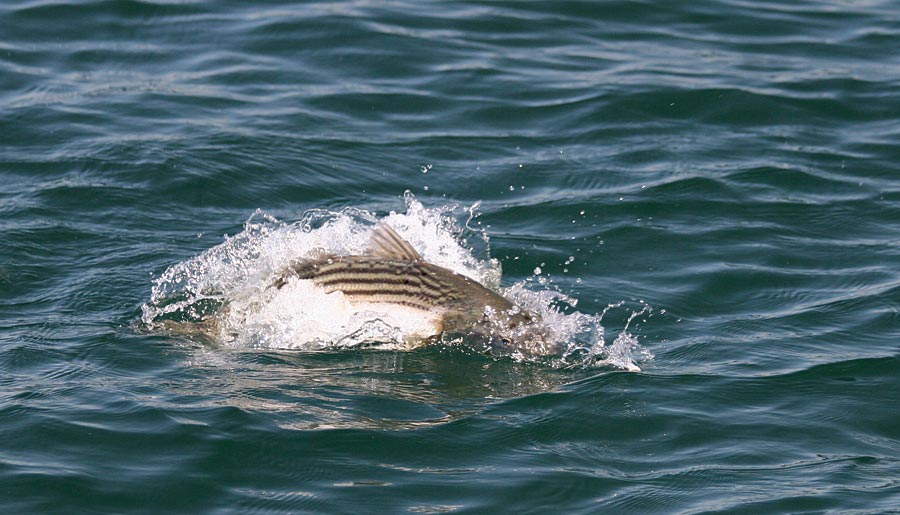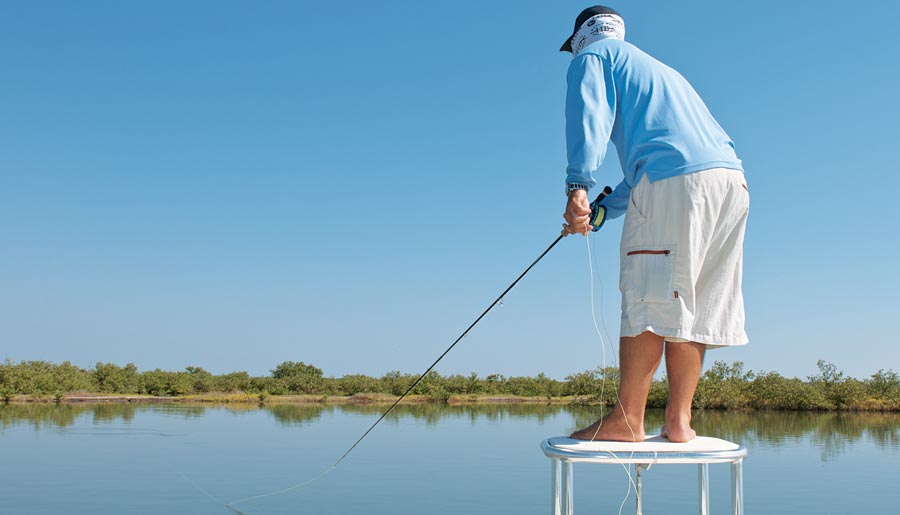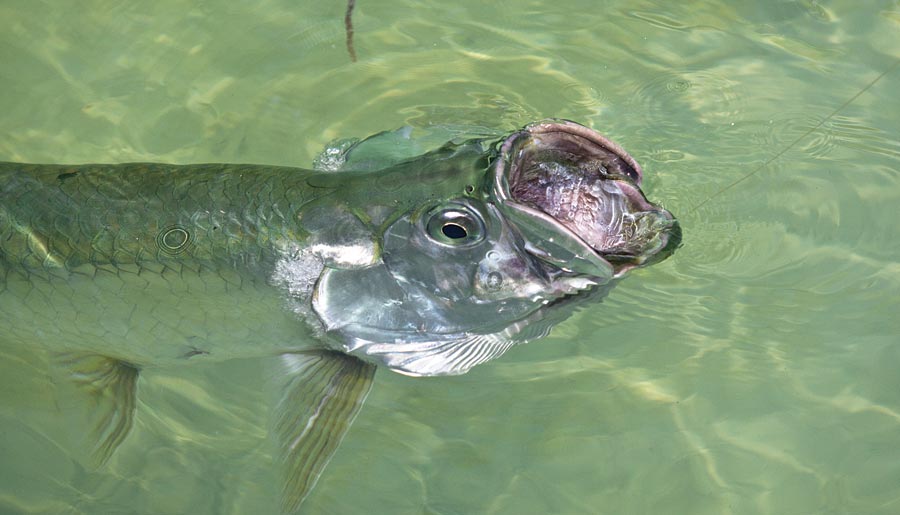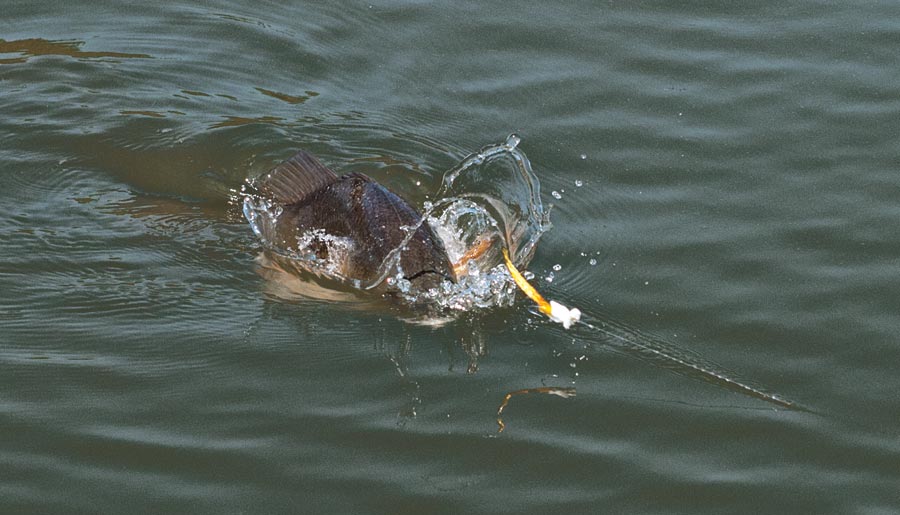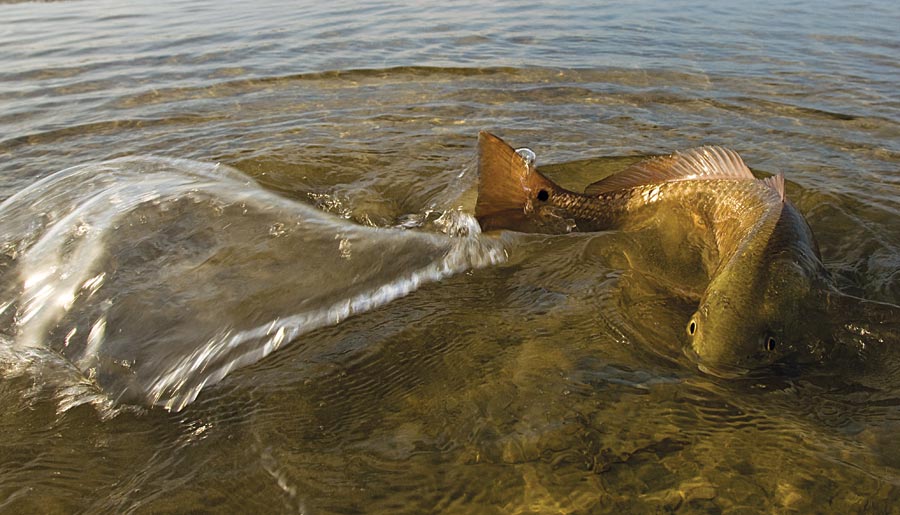
So many fly-anglers become hellbent on being able to throw a line 100-plus feet. Don’t get me wrong, casting long distances definitely comes in handy — especially if you can do so accurately. However, after the presentation comes what could be considered the most important fly-fishing skill of all — feeding the fish. Being a good fish feeder means that you understand the nuances of a fish’s body language so well that you know exactly how the fly needs to move to entice an eat.
The late psychedelic-rock and blues guitar virtuoso Jimi Hendrix once explained why he was so quiet as a child: His father always told him that a fish would never get in any trouble at all if it just kept its mouth shut.
We at Fly Fishing in Salt Waters conducted three separate Q-and-A’s with expert fish feeders Capt. Craig Cantelmo, Capt. Nick Sassic and Andy Mill to find out how to get more fish in more trouble.
 Capt. Craig Cantelmo
Capt. Craig Cantelmo
Coastal New York
631-734-2251
ccantelmo@vanstaal.com
Q: What are the key elements of being a successful fish feeder?
A: You’ve got to be able to look at that fish and understand its body language. When you a see a fish with its pec fins out and you get the fly in the fish’s zone, that first bump [strip] of the fly should tell you how you need to work that fish. Lots of my clients have a very rhythmic stripping motion, which draws attention but rarely an eat.
Q: So what do you watch for?
A: Typically, once I’ve made the right presentation, I make a long strip and watch how the fish reacts to that. More often then not, the fish will rush the fly when it sees that initial movement. At that point, I like to stop the fly. What happens is, since the fish can’t put the brakes on fast enough, it inadvertently ends up running right into the fly, which will almost always draw an instinctual bite. You’ve got to give the fish an opportunity to eat, and normally, for the stripers I fish for in New York, it’s the fly stopping that gives the fish that opportunity.
I can’t tell you how many times anglers miss the opportunity. They make a great cast and do everything right while they’re stripping, but when they see the fish reacting to the fly in a positive way, they continue to strip, all the while drawing the fish closer and closer to the boat. They never give it a chance to eat. You’ve got to remember, in most sight-fishing scenarios, a floating line is used, so every strip you make, you are pulling the fly higher in the water column and closer to you. So, really, what you are doing isn’t feeding at all; you are simply giving the fish a better opportunity to see you.
Q: I’ve heard others advise to always keep the fly moving. Why are you such a proponent of the drop, or stop, of a fly during the retrieve?
A: When you have a fish that’s starting to turn away from the retrieval of your fly, if you drop the fly, it’s less threatening to the fish. When you make that first bump and the fly is in perfect position and the fish comes at the it, you could strip it a couple more times, but again, you are drawing that fish closer with every strip. A lot of times, I’m not nec-essarily stopping the fly, but I’m imparting action to the fly while it’s stationary, which gives the impression that the prey is still moving. But again, because the fly isn’t accelerating away from the fish, I’m giving the fish a chance to eat.
Q: Can you give us any insight on the stripping techniques that you use?
A: Well, yeah! I always give the fly the tried-and-true “twitch, twitch, wiggle, wiggle.” Ha, ha, ha! Seriously, though, a lot of it has to do with the flies you are using.
Q: OK, so what type of flies do you prefer for feeding fish?
A: I pretty much high-tie all of my Clousers. You know, many of the flies people use, especially when they first start, have way too much flash. Personally, I’ve found that having up to three pieces in a high-tied Clouser works well, because if there’s too much flash, when it comes time to eat, more often than not, the fish will shy away.
Q: Would you say that high-tied Clousers with a hint of flash are one of your go-to patterns?
**
A:** Definitely. I tie all of the bucktail on the same side of the shank. I tie it in front of the dumbbell eyes and then put a couple of wraps behind the bucktail so that the material is propped up and so that the point of the hook is always covered with material. What that does is it allows that fly to sink in a uniform manner, and it almost causes the fly to swivel on the way down from the bend of the hook to the eye. So with very subtle strips, you can impart a tremendous amount of action to the fly.
Q: What’s the most important aspect of feeding a fish?
A: The most important part of feeding a fish is recognizing when the fish is going to eat. That just comes with a lot of experience. With striped bass, I can tell by the way they are moving or the positioning of their pec fins. Then again, there are those fish that you can feed perfectly, and they just won’t react at all. But that’s the addictive nature of the fish-feeding game.
**
**** ****Capt. Nick Sassic
****Capt. Nick Sassic
East Central Florida
386-479-3429
www.mosquitolagoonflyfishing.com**
Q: Even though you instruct your clients how to strip the fly, what are some common mistakes you see anglers make?
A: Stripping the fly too fast or too slow. I tell them to listen to my voice. If I say “strrrrrip it, strrrip it,” I want it to move slow, but sometimes they move it too slow or not at all. Often what happens is they aren’t aware that the boat is drifting or the current is moving faster than they are stripping. I understand getting excited, but when anglers get too excited, they end up moving the fly too fast. You want the fly to move, but not in a way that’s invasive to the fish.
Q: Obviously, shrimp, crab or baitfish patterns should be stripped so they look like a shrimp, crab or baitfish, but what about flies like Toads and Seaducers, which don’t resemble any one type of prey?
A: Fish eat flies for one of two reasons: because they think the fly is something they eat or instinct. When you are fishing flies that directly represent a prey species, you want to strip them so they look like that animal. With nondescript patterns, you simply want to strip them in a way that imparts the most action possible.
Q: Can you offer any tips on fly selection to better the odds of getting an eat?
A: You’ve got to think about what the conditions are and then look in your box and ask yourself, “How are the fish going to see this fly given the conditions?” When you’re fishing dark-colored water, using a dark-colored fly makes sense because that’s what the fish should be seeing. You might also use a dark-colored fly when you think fish will be looking up for food and the sun is high. Using a light-colored fly in this scenario would make it easier for a fish not to see the pattern. Because it’s between the sun and the fish, the profile of the fly would blend into the sky and disappear. I like using bright-colored flies when the sun is at a 45-degree angle. This angle allows the actual color of the fly to be more visible to the fish.
Q: Is there anything about the way a fish swims or sits that gives you a good idea of how it might want a fly to move?
A: You’ve got to assess the fish’s demeanor. A good example is a laid-up tarpon. More than likely, a laid-up tarpon isn’t going to go out of its way to chase something down. It’s much more likely to eat if a meal drifts by its nose. Therefore, that’s how the fish should be fed. When the fly drifts by and the fish reacts, that’s when you start the feed.
Q: What about in non-sight-fishing situations, like casting around mangrove shorelines or potholes?
A: Well, ambush predators, such as trout and snook, make their living off of surprising their prey. In situations like this, it’s best to make your fly look like it’s casually swimming and that it has no idea any type of predator is nearby.
Q: What about when a fish tracks the fly and eats between strips?
A: Ha, ha, ha! Yeah, that can be tricky. That happens a lot with baby tarpon. I’ve noticed that when a baby tarpon is tracking a fly, it often eats right as I’m at the back end of my strip, which is when the fly has either slowed or stopped. Whether it’s a tarpon, a redfish or a snook, the fish isn’t simply picking a bait off the bottom; it’s sucking the fly in its mouth, as well as a lot of water. That water has to be expelled before the angler can come tight. Anglers often react on the mouth opening and not the mouth closing. This happens all the time with tarpon. The angler sees that huge mouth open, and he freaks out and ends up pulling the fly out of the zone. Some people have said the best way to correct premature hook-sets is to make the presentation, shut your eyes and listen to the guide. Doing this might not be for everyone, but it certainly makes the angler react on the feel of the hook hitting the fish’s mouth instead of the mouth opening. A lot of times, I see a fish eat my client’s fly, but I never say “it ate.” Instead, I just keep telling the client to strip until the fish is tight.
Q: What’s the most valuable piece of advice for an angler who is struggling with being an effective fish feeder?
A: Always let the fish dictate how the fly is stripped. Really, it’s almost always going to be a trial-and-error thing. Strip it one way, and if the fish doesn’t react positively, strip it another way.
 ****Andy Mill
****Andy Mill
South Florida
Author of A Passion for Tarpon
www.wildriverpress.com
Q: I’ve heard you talk about a cat and a piece of yarn in reference to feeding fish. Can you explain?
A: I’ve often used the analogy of getting a cat to reach out and grab a piece of yarn. If you get the piece too close and hit the cat on the head, it will run away, or if you present the yarn too far away from the cat, it’s not going to react. The same is true with fish.
**
Q:** What mistakes do you see anglers make with tarpon? And how do you typically feed poons?
**
A:** Most anglers throw the fly to the fish, when in reality, it should be presented in a way that intercepts the path of the fish. Not only does that decrease the odds of spooking the fish, but it also leaves you room to feed it.
When I feed a tarpon, I don’t do anything after the presentation until I see the fish’s first reaction to my fly. Sometimes the fish will peel off, and you just can’t do anything about it. But feeding a fish is closing the distance between the fish and the fly without stopping the fly. So once you start tweaking your fly, sliding it and bumping it, whether targeting a bonefish, a tarpon or a permit, you want to keep that fish interested, and lots of times, if you stop the fly, the fish will lose interest. Other times, stopping the fly is important. You may have a permit tailing on your fly and running it down, and in many cases, if you strip it too fast, the fish will get too close to the boat and will peel away.
Q: You mentioned that you like to keep the fly moving but sometimes do have to stop the fly. How do you know when to stop it?
A: Well, remember, you want to keep it moving without drawing the fish too close to the boat. So sometimes dropping the fly is your only option to keep it away.
Q: When you stop the fly, how do you keep the fish’s interest?
A: I always use flies with materials such as rabbit strip and marabou. These materials allow the fly to have action even while it’s not being striped. When the fly is stopped, you have to let the materials work for you.
**
Q:** How do you know when to slide and when to bump your fly?
**
A:** The first thing I do is get my fly in a position where I think the fish will be able to see it. Then, with my stripping hand, I’ll slide my fly ever so slightly. That slow but steady movement of the fly is normally a sure bet to get the fish’s attention. Once the fish shows interest, you’ll see it almost raise up in the water column, you’ll see its eyes get fixed on the fly — that’s when I’ll start bumping the fly.
Q: What’s the best approach for laid-up fish?
A: For laid-up tarpon and tarpon fishing in general, the cardinal rule is don’t throw the fly to the fish. For laid-up tarpon, I like to throw the fly so it will sweep within reach of the fish with the current. And the same is true with other laid-up species.
Q: What about feeding a fish by throwing the fly right on top of its head?
A: Yeah, sometimes there’s very little, if any, feeding involved. The other day, I was fishing redfish, and the only way anybody was able to get a bite was to cast the fly right on top of their heads. If it wasn’t, they’d never see it. Lots of people, like Bob Branham and Will Benson, are big advocates of making aggressive presentations like this when permit fishing. Sometimes, getting a reaction bite from a permit is the best strategy. But then again, with permit, sometimes short, fast strips are necessary to draw the jack out of them.
Q: What is the essence of feeding a fish?
A: Feeding a fish properly is reading a fish properly. Don’t get me wrong, this isn’t black and white; there’s a lot of gray area in this. Most people get into a nervous situation where they are reacting without feel, without thought. They’ve waited all year to make that presentation, and they get excited and just start stripping like hell. In most places in the world, fish are too sophisticated to react to that type of retrieve.
Q: Any closing thoughts on feeding?
A: Good fishermen can catch a lot of fish, and they can catch a lot of big fish. Great fishermen can catch the fish that doesn’t want to eat, and that’s where feeding fish comes into play.

